From Breath-knocking to Breath-taking: Sanjukta’s Sandakphu Adventure
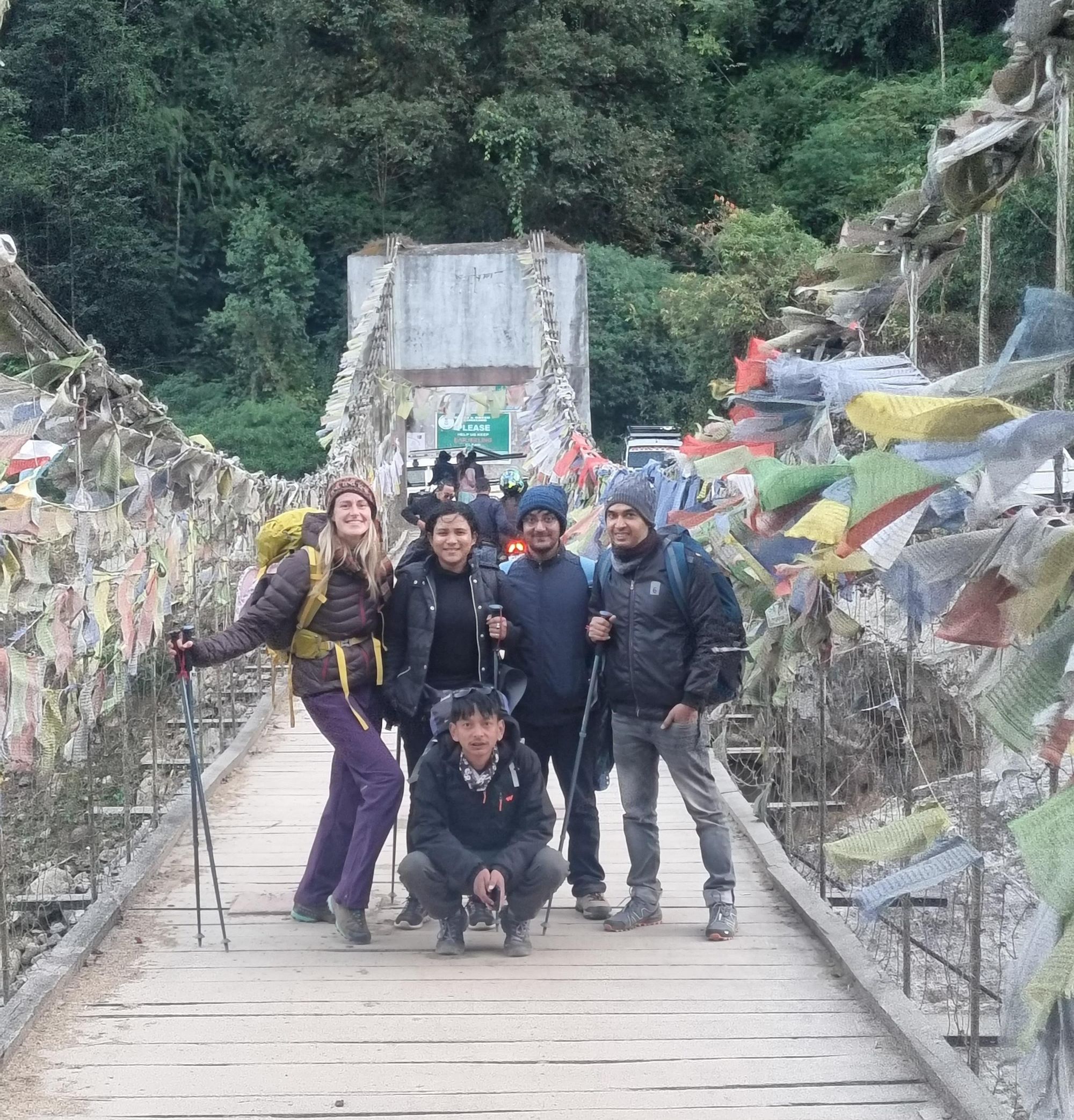
Sanjukta is a Bengali. Growing up in Kolkata, she had always heard wonderful things about Sandakphu. But unfortunately, she never had the chance to go there. Though access was easy and time was never an issue, the opportunity simply never came. Her parents were not too keen on trekking, so every time the idea came up during family trip discussions, it was dismissed.
She would be lying if she said she was unaware of the routes or the region. She had once visited Tumling during a college trip, but reaching Sandakphu had remained out of reach.
After settling down in Delhi for her job, she grew further away from the place. That was when her urge to go on the Sandakphu trek grew stronger than ever.
Last year, she and her friend decided to finally undertake this adventure during their visit home for Durga Puja. Since both hailed from Kolkata, planning the trip was convenient. They contacted Thrillophilia to book a slot for the trek, and once confirmed, wasted no time in finalising it.
It was November, peak winter, when they began their trek. The cold mountain air bit into their skin, and the fog added an element of mystery to the landscape. Their journey was long, and they had spent two months preparing for it.
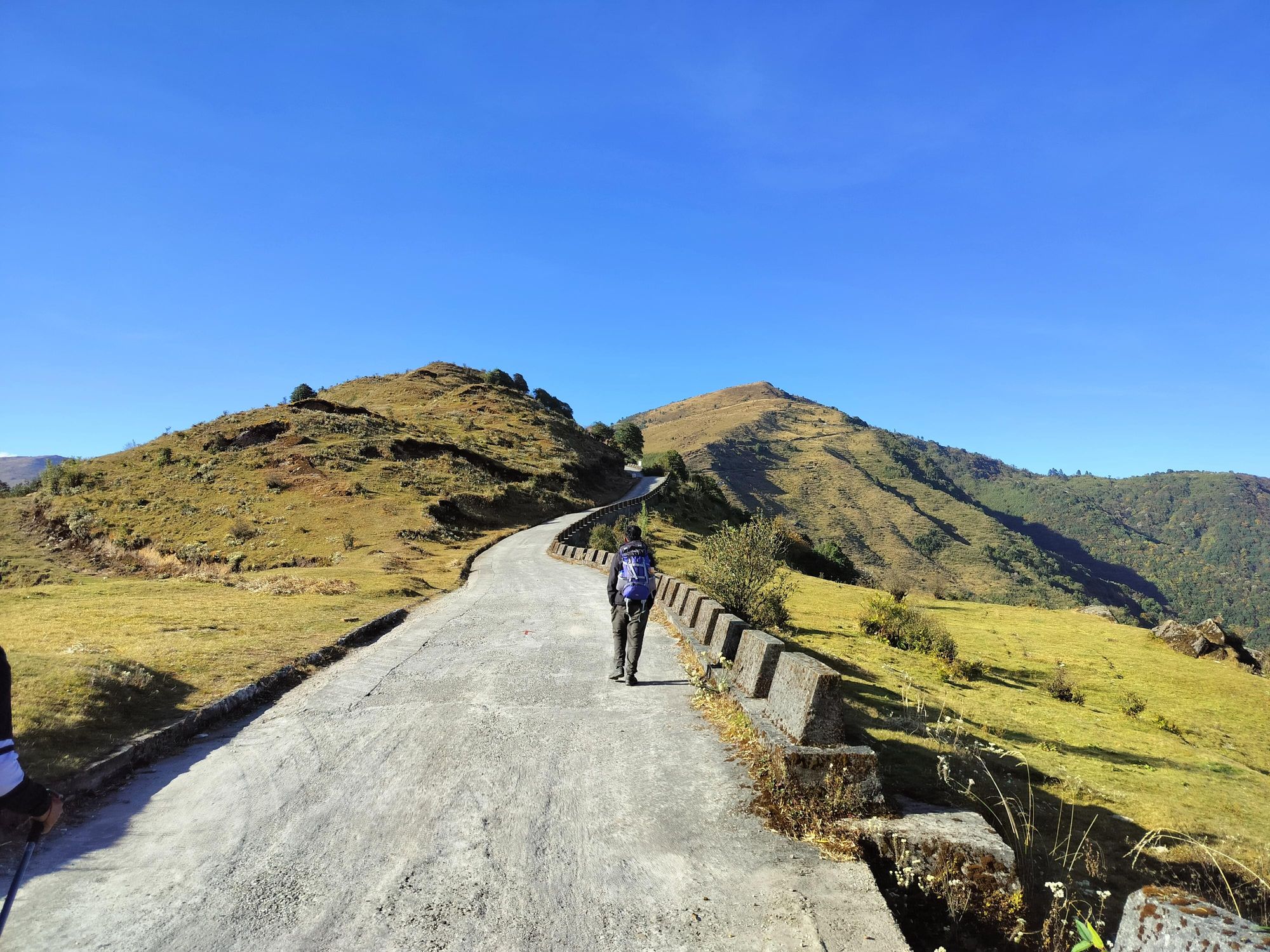
The Exhaustion
Hoping all their jogging and breathing exercises would pay off, they began the trek from Manebhanjan to Tumling. The 11 km trail had steep ascents, but the magical beauty of Singalila National Park cushioned their fatigue. The mountains and dense forests kept them spellbound.
Unlike her previous visit, when Tumling’s trees were lush and dotted with red and white rhododendrons, this time the forest had turned golden and crimson with autumn. The dried leaves crunched beneath their feet, and the breathtaking views filled their hearts with joy and satisfaction.
Both of them loved the mountains, but this was their first trek. It took almost two hours to get used to the relentless walking and physical strain. Near Tonglu, exhaustion struck hard. Their trek leaders noticed and came over to motivate them. They knew they had to continue, but their legs simply refused to move.
After a 15-minute rest, they set off again. This time, their legs seemed to move on their own, driven purely by willpower.
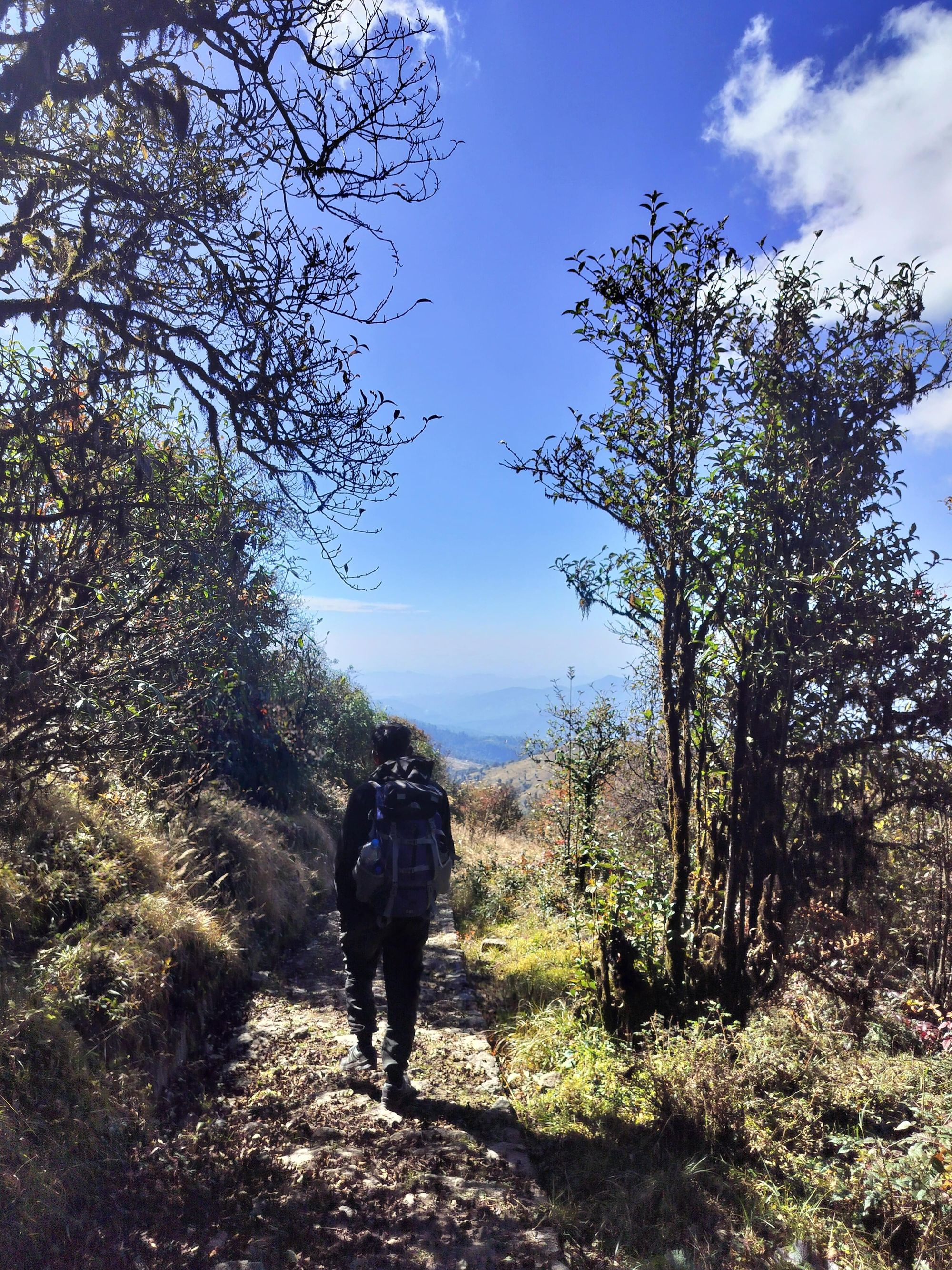
Sanjukta realised that with a bit of preparation and a lot of mental strength, the body can be pushed far beyond expectations. The energy of not giving up is powerful—it can surprise anyone with how far the body can go.
They finally stopped for the day at Tumling. She was so tired she could barely move. Her friend handled the food arrangements and called her once it was ready. The aroma of rice and egg curry revived her senses. She ate heartily and went straight to sleep again.
But overeating in the mountains is a mistake, the body shuts down. When she woke up in the evening, she had no will to join the group’s bonding session. Her friend dragged her out of bed, and she sat grumpily in the lounge. Dinner time was a relief, it meant another chance to sleep. This time, she ate moderately, knowing they had a long walk to Kalapokhri, “The Dark Lake”, the next morning.
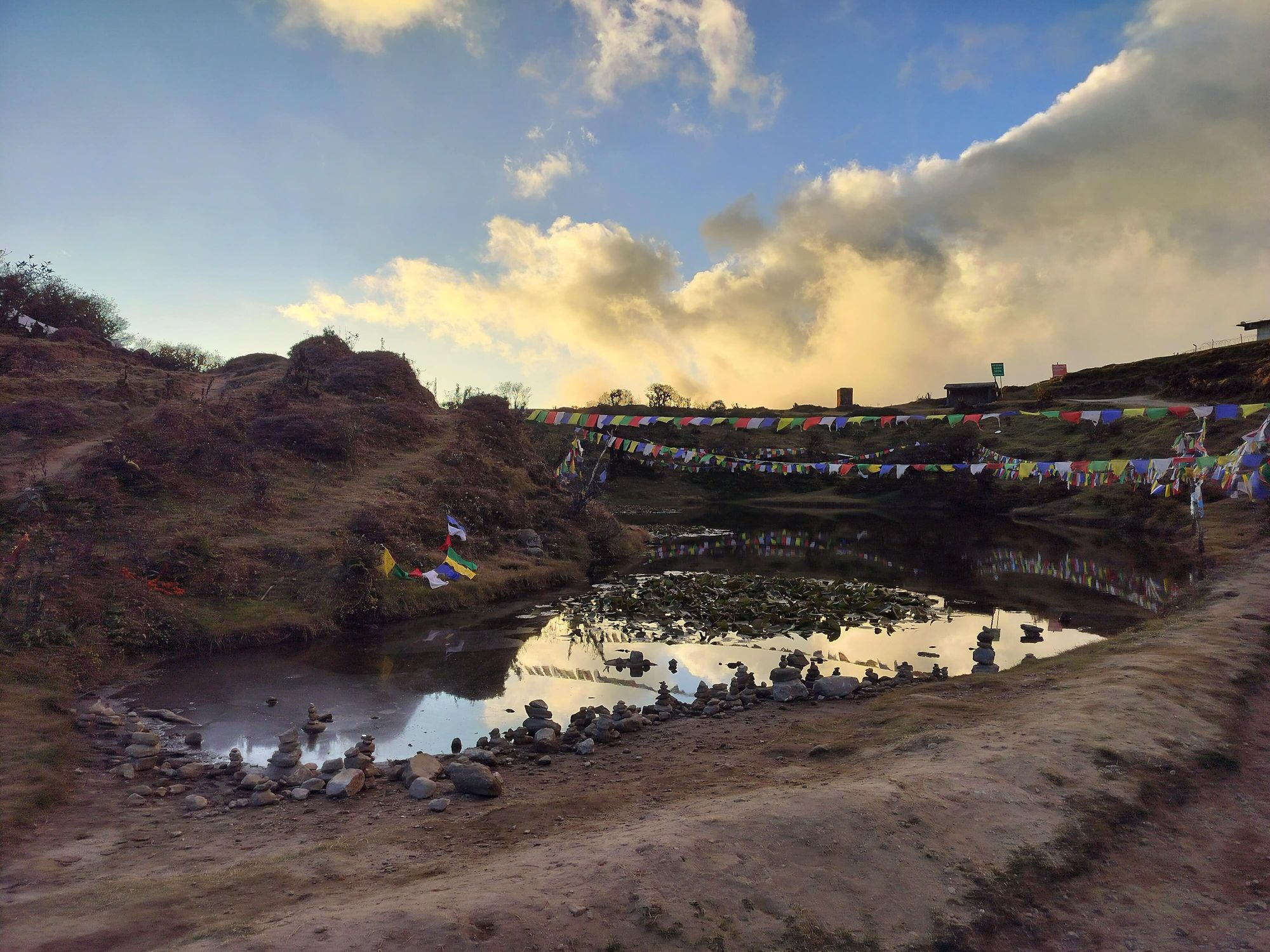
The Rewards
The road to Kalapokhri was awe-inspiring.
Though the trail grew steeper, they had grown somewhat used to trekking. The first day had been painful; the second was manageable, though the incline still drew out a few muttered complaints, mostly aimed at themselves for not being as fit as their local guides.
When they reached the lake, they were stunned. The water was almost black, surrounded by colourful prayer flags fluttering in no particular order. The chaotic yet beautiful sight filled Sanjukta with her first true sense of accomplishment.
The next morning was the final ascent, to Sandakphu. The vantage point promised magnificent views of Mt Kanchenjunga and Mt Everest.
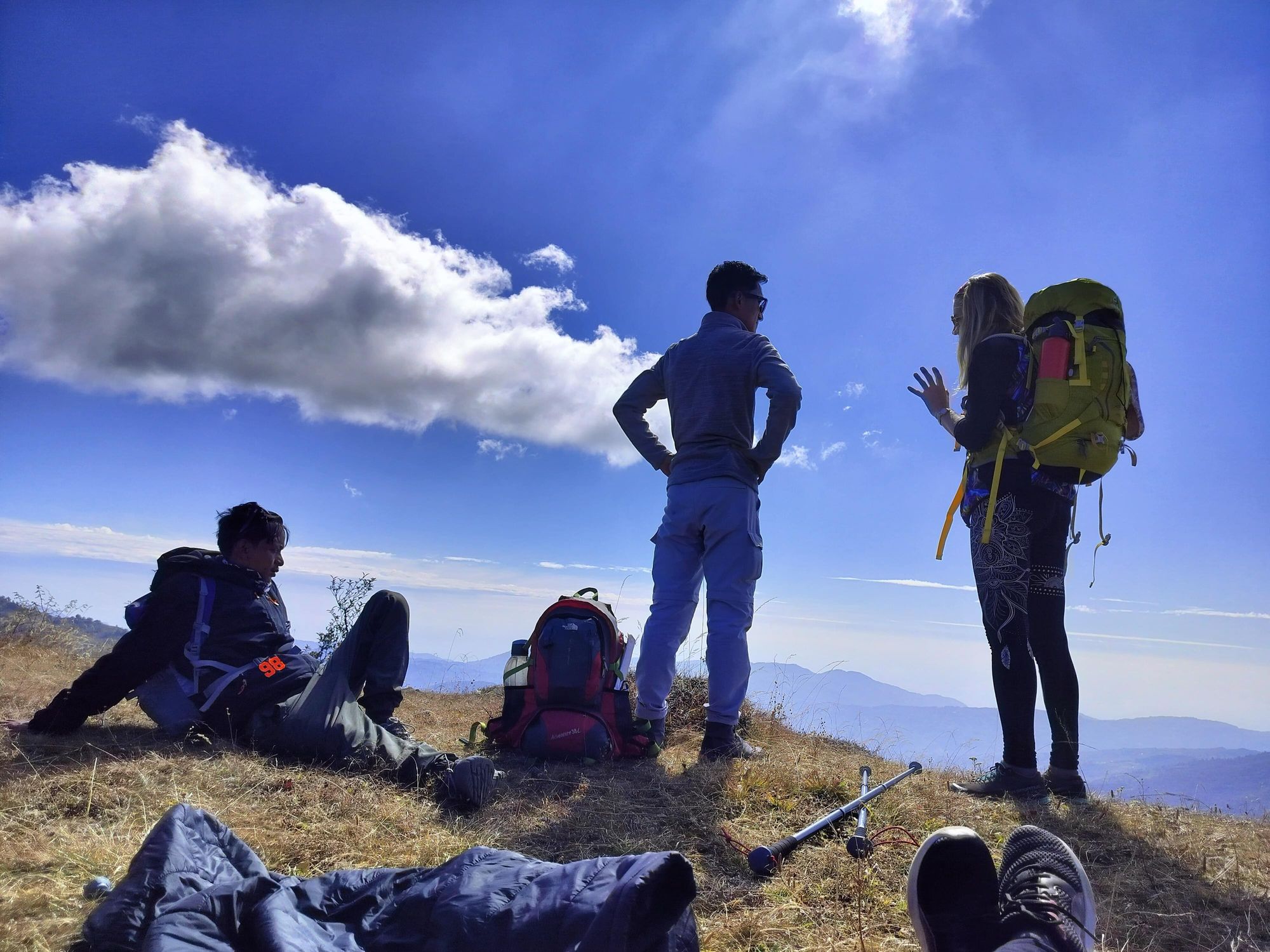
Our trekking trail had already turned from dense forests to rocky and barren climbs, occasionally encountering shrubs and trees. I kept walking and walking, I had started to enjoy it. Yes, it made me feel like there was a stone on my chest, but the stone was wearing away. Practice makes a person perfect!
The Sight…Oh, the Sight!
By now, the trail had changed from dense forests to rocky and barren stretches, with only a few shrubs in sight. Sanjukta found herself enjoying the rhythm of walking. Though she still felt the weight on her chest, it was lighter now—proof that practice truly builds strength.
The Sight… Oh, the Sight!
They reached Sandakphu Peak at the perfect time—just as the sunset began painting the sky in spectacular colours. They stayed there for an hour, watching in silence as the sky transformed, before heading back to the homestay. It was a magical moment.
But the sunrise the next morning was even more breathtaking.
In her words, watching the black turn into blue was more beautiful than watching the blue fade into black. The stars dimmed as the horizon shifted through shades of violet, deep blue, pink, and orange. The same hues danced across the snow-clad peaks of the Everest range, while the clouds below joined in moments later. Finally, the sky turned a calm blue, signalling the end of nature’s most spectacular show.
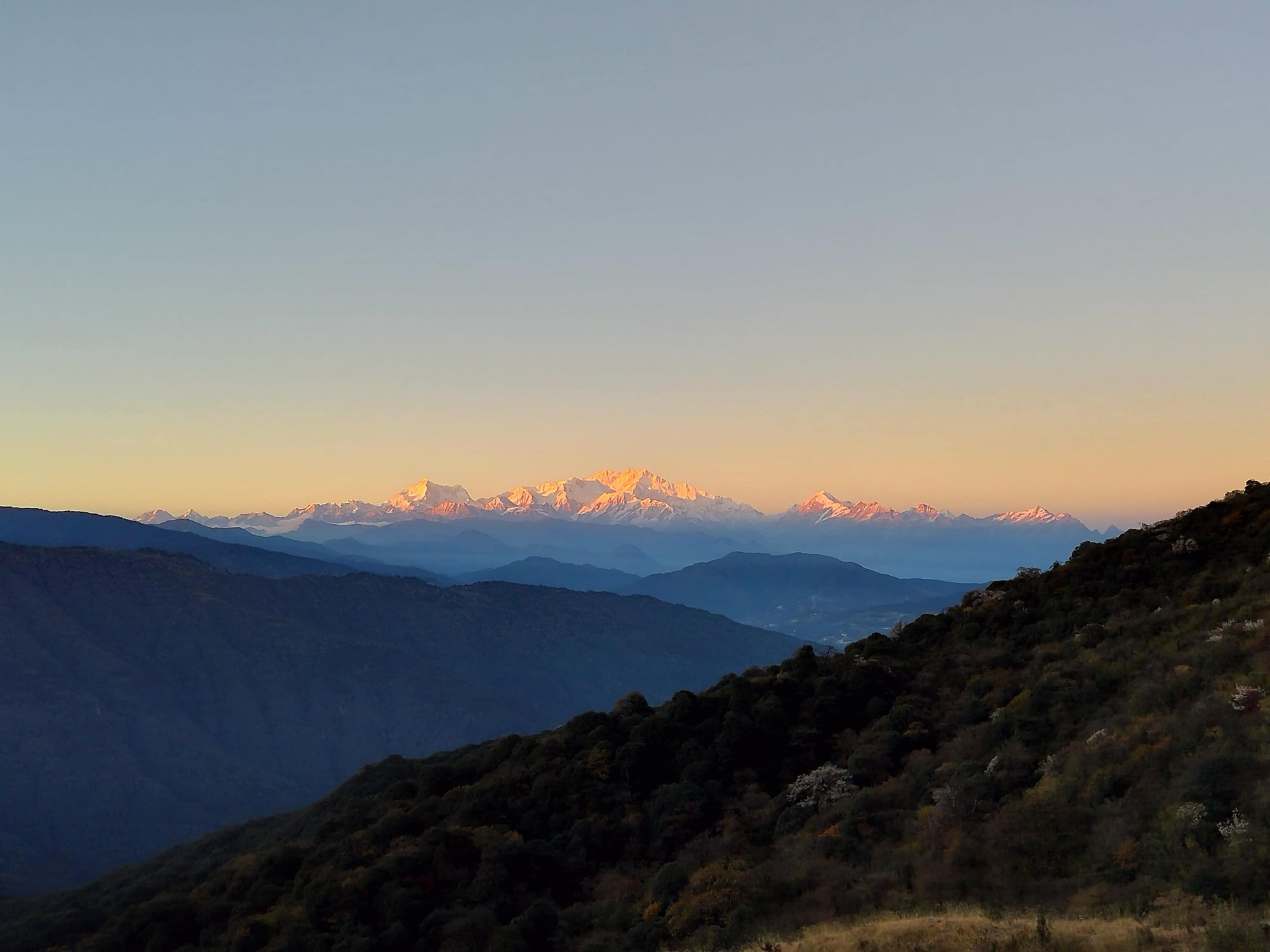
It was one of the best sunrises she had ever witnessed.
Sanjukta and her friend were beyond grateful—for the experience, for the people who made it special, and for the lessons it offered. The local guides, homestay hosts, and Thrillophilia’s impeccable arrangements made the journey seamless and memorable.
For her, the trek was not just an adventure—it was a test of endurance, a moment of discovery, and a reminder that the best views truly come after the hardest climbs.
That, she realised, is what makes a trek, a trek.